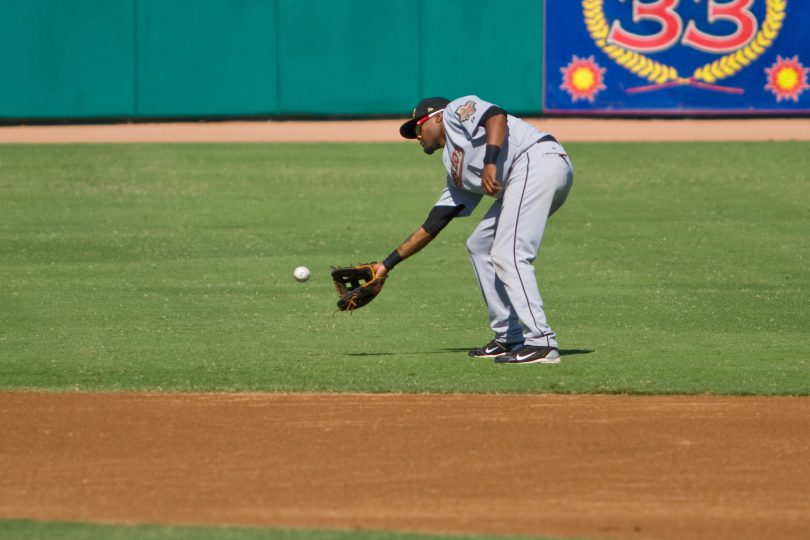The Situation:
There’s a runner on 1st base with 1 out in a 1-0 game. It’s the 4th inning and there’s a right-on-right matchup between the pitcher and hitter.
The Play: The 1-1 fastball away comes in as intended and the batter stings a low line drive towards the second baseman. The second baseman has little more time than to take a step in on the sinking liner. It’s a difficult call whether he catches the ball in the air or on a short-hop, but he fields it clean. In a split second of confusion, people take contradictory actions. The runner initially takes a step back towards first, continuing to watch the play. Then he takes two or three hard steps towards second, reading a short-hop. The umpire makes the out call signaling a catch on the line drive. Seeing this, the runner turns and heads back to first. Meanwhile, the second baseman, feeling like he caught a short-hop, initiates a double play turn to the shortstop arriving to the bag at second.
The Outcome:
The runner, who would have been an easy out had the second baseman come up throwing to first right away, is now in the way of the shortstop who is trying to make the turn. As the shortstop’s throw arrives at first, the runner is diving back to first base. The first baseman can’t get to the ball before it strikes the runner, glancing off his helmet and ricocheting to the fence. The runner, confused and not really sure exactly what has happened makes no attempt to advance. After a moment where everyone is looking around trying to figure out exactly what happened and if they made the right decision, we are left with a runner at 1st base with 2 outs. The play is ruled a line-out to the second baseman and no one seems to protest.
What Went Wrong:
This is one of those rare plays that make baseball such a fascinating game. It’s also a play that is tough to prepare for. Unable to tell the umpire’s call before it’s time to act, both the fielder and runner must make split second decisions without knowing the umpire’s decision. The fielder has the most information, as only he knows whether he truly caught the ball. We can assume he will play it out based on whether he thinks he made the catch or not. The runner is in a more difficult situation. So how should he react in this situation? Should he play it as he sees it? Should he wait for the umpire’s call? Should he read the second baseman’s decision? There are so many combinations of possibilities with all three actors operating independent of each other and having multiple options. When we started thinking about all the possible combinations and trying to evaluate possible outcomes, it made our heads spin, and we have all the time in the world. Clearly the base runner doesn’t have time to do this type of analysis.
The answer to success in these situations is experience (which you are getting right now!) and a strong base running system. A base running system is a standardized way of doing things that has safeguards built in and minimizes the thinking that a runner must do. It frees them up to simply react what they see within the framework of their system. We discuss the importance of a base running system at length here. On this play, the runner executes the base running system flawlessly.
The batted ball is a line drive, so the runner retreats back to first as his team’s base running system tells him to do. He then reads a short-hop, and starts to run to second. However, he doesn’t just run blindly. He continues to read the play, knowing that it was anything but clear cut. As soon as he sees the umpires signal the catch, he responds with a quick pivot and springs back to the bag. He goes hard back to the bag with a dive. Everything he did was by the book and system approved. The play easily could have turned into a double play, but given the circumstances, that was out of his control.
The human element of the umpire’s official ruling make this play difficult for everyone. The fielder could have had an easy double play if he had simply thrown to first, but he felt he had caught the short hop and opted to secure the lead out first and turn what he thought was an easy 4-6-3 double play. You can hardly fault his decision-making. As we mentioned, the runner also reacted appropriately, and changed course as needed. In the end, the defensive coach probably wishes the inning was over. The game had a different idea, but everyone in this situation was thinking the game!







